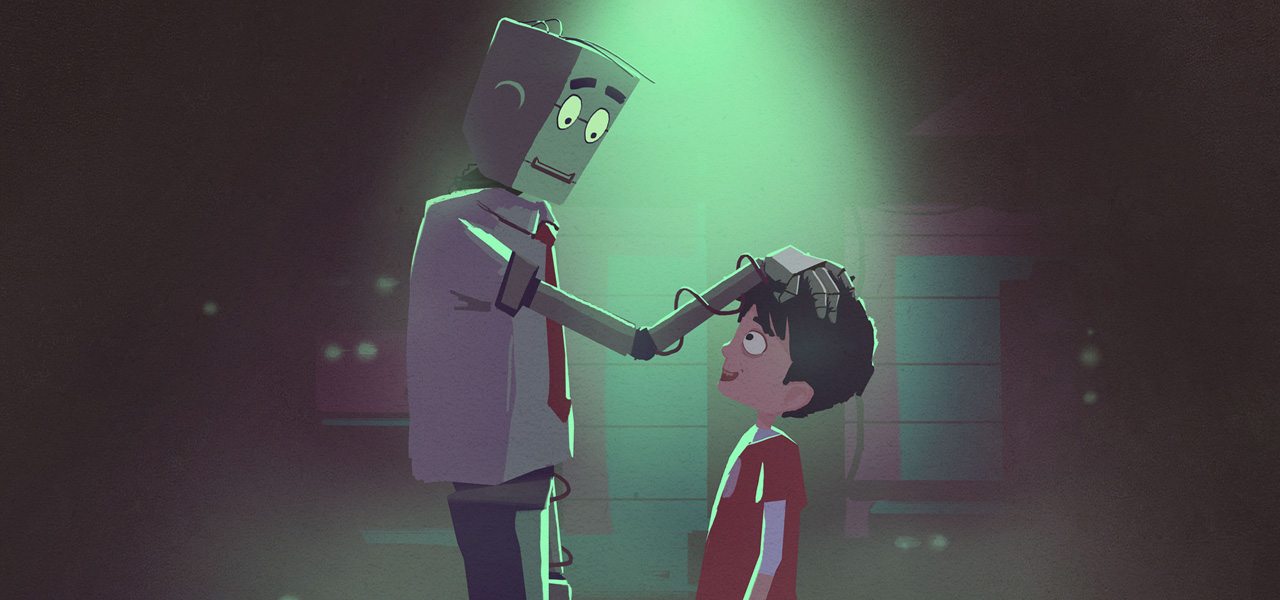
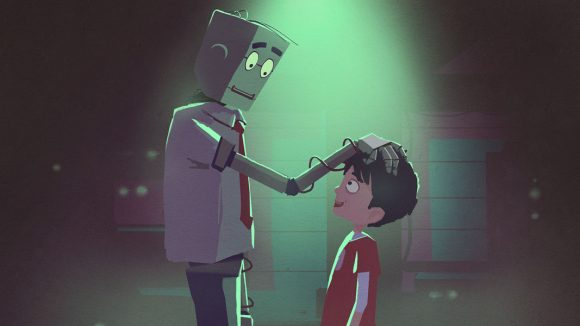
Smith & Foulkes Try Something Different With An Animated Storybook App
Oscar-nominated directing duo Adam Foulkes and Alan Smith (Smith & Foulkes) have found a new medium to showcase their work—a storybook app, which you can now download.
The graphic novel-style animated storybook is called Radio Jones and His Robot Dad and is about a boy whose absent father forces him to make a robot parent instead. The app was also created by the directing pair’s long-time collaborator Chris O’Reilly, and is now being developed as a feature film.
Watch a trailer for the storybook, below:
Smith & Foulkes were nominated for their short film This Way Up and have numerous television commercials, film, and title sequences, and other projects to their name, including the hugely popular animated Honda “Grr” advertisement from 2004. They are also founding directors at Nexus Studios, which produced Radio Jones and His Robot Dad.
Cartoon Brew asked Smith & Foulkes about what made working on a storybook different from their usual animated fare, and how they developed the app.
Cartoon Brew: How is directing for a storybook app different from directing a commercial or short film or other animated work? What does this medium let you do that perhaps others can’t?
Smith & Foulkes: This really was a journey into the unknown for us. We’re used to telling stories in a linear way where the viewer sits back and watches the film unfold before them. But telling the story as an app required a very different approach. We had to re-think our process, particularly in how we show the more dramatic and emotional scenes, and find the balance with how the interactivity suited the different parts of the story.
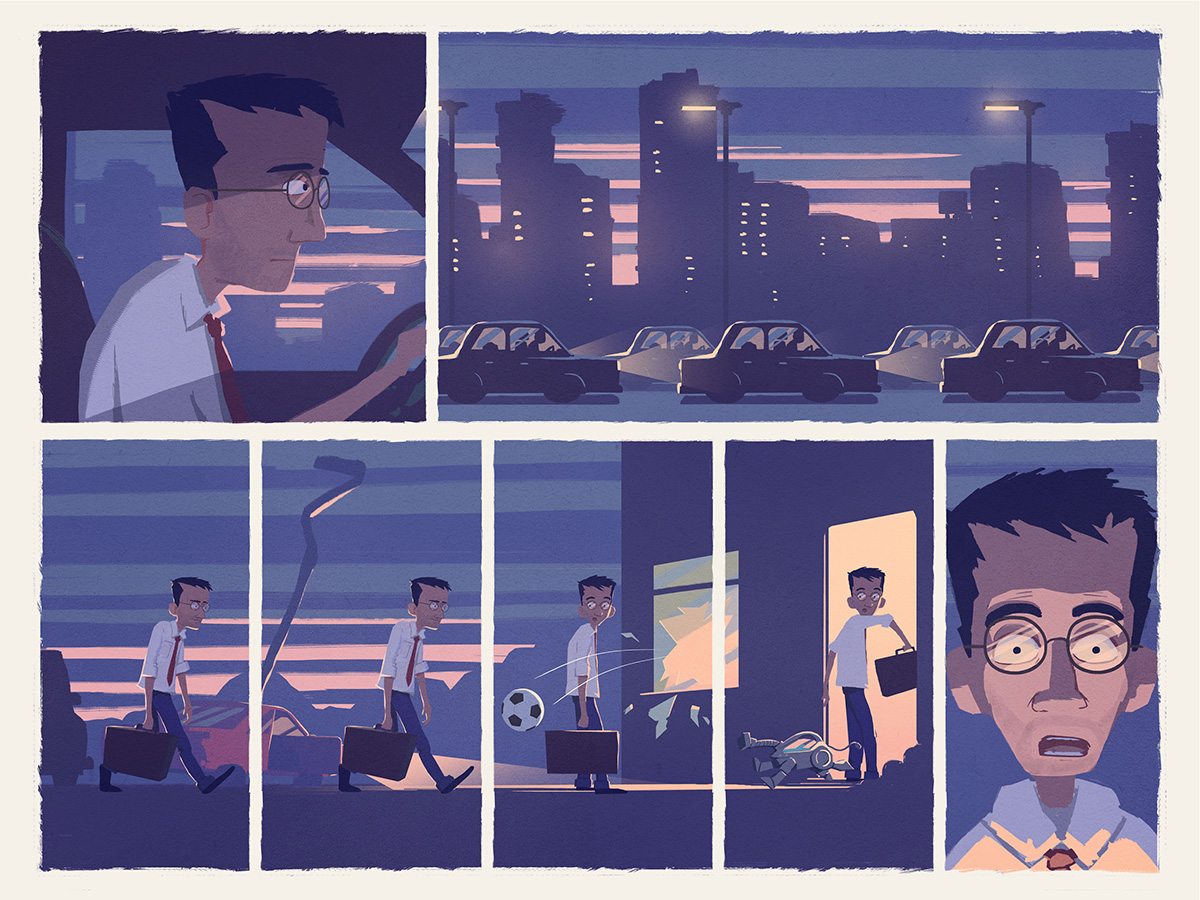
We researched a lot of story apps and they seemed to fall into two categories. Either the narrative flow was frequently interrupted by such things as a coloring-in game that tended to distract you from the story, or they were essentially a short film broken up into sections that required the viewer only to click to move the story forward. We wanted to try something a bit different.
Initially we tried putting interactive animations in randomly but this began to feel a little frustrating for the reader, never knowing quite what to see and what you’ve missed. So we devised some rules that would make it more cohesive. Every page would have a short animated ‘scene-setting’ animation in the first panel, but would essentially remain as a graphic novel. Then within the page other animated features are there to be discovered – with hints – if the reader is interested.
It was important that these were not critical to the story so if you don’t discover them all you still know what’s going on. They are there so that the reader can share in some of Radio’s adventures, such as rope-swinging across the lake, firing water pistols at each other or shouting things that echo. In this way the app format allows the reader to control how they experience the story, rather than be told it. We could also add details such as the clock where you can see what dull office chore Dad is doing while Radio is out having fun, which wouldn’t have worked as well in a linear film.
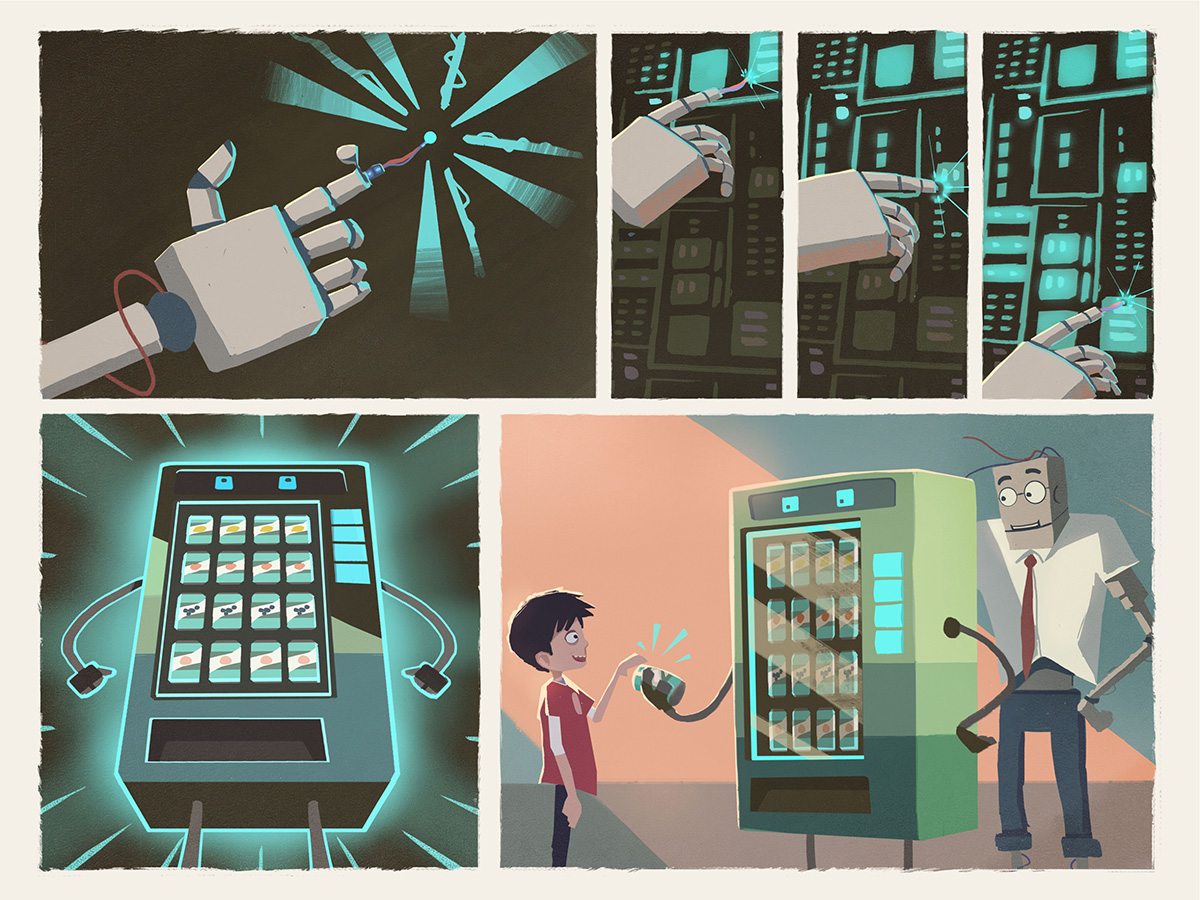
This was very much an interactive experiment for us, one in which we tried to slightly reinvent the currently revered ‘rules of user interactivity’ that can be quite limiting to creative storytelling. People might enjoy seeing things slightly differently, or they might get confused and frustrated. I guess our motto is, ‘you never know until you try!’ But we always tried to keep in mind that at its heart this is a story rather than a game or a technical exercise.
Can you talk about the idea behind Radio Jones and His Robot Dad? Where would you like to continue to take the story?
Smith & Foulkes: Firstly, we just loved the idea of a boy and a robot having a crazy adventure together in the wild. But we wanted to bring an emotional thread to the story whereby the robot was a direct substitution for a father, so that we could play with the often conflicting themes of fun and responsibility that naturally occur in any father/son relationship.
The app was a perfect opportunity to establish the bond between Radio and Robot Dad but we want to take the story much further: how a boy learns both the exhilaration and the pitfalls of his newfound independence, a robot becomes ever more self-aware of the exciting possibilities offered up by the world around him, and a redemptive father is forced to battle his unruly robotic doppelgänger. A feature-length script is currently in development.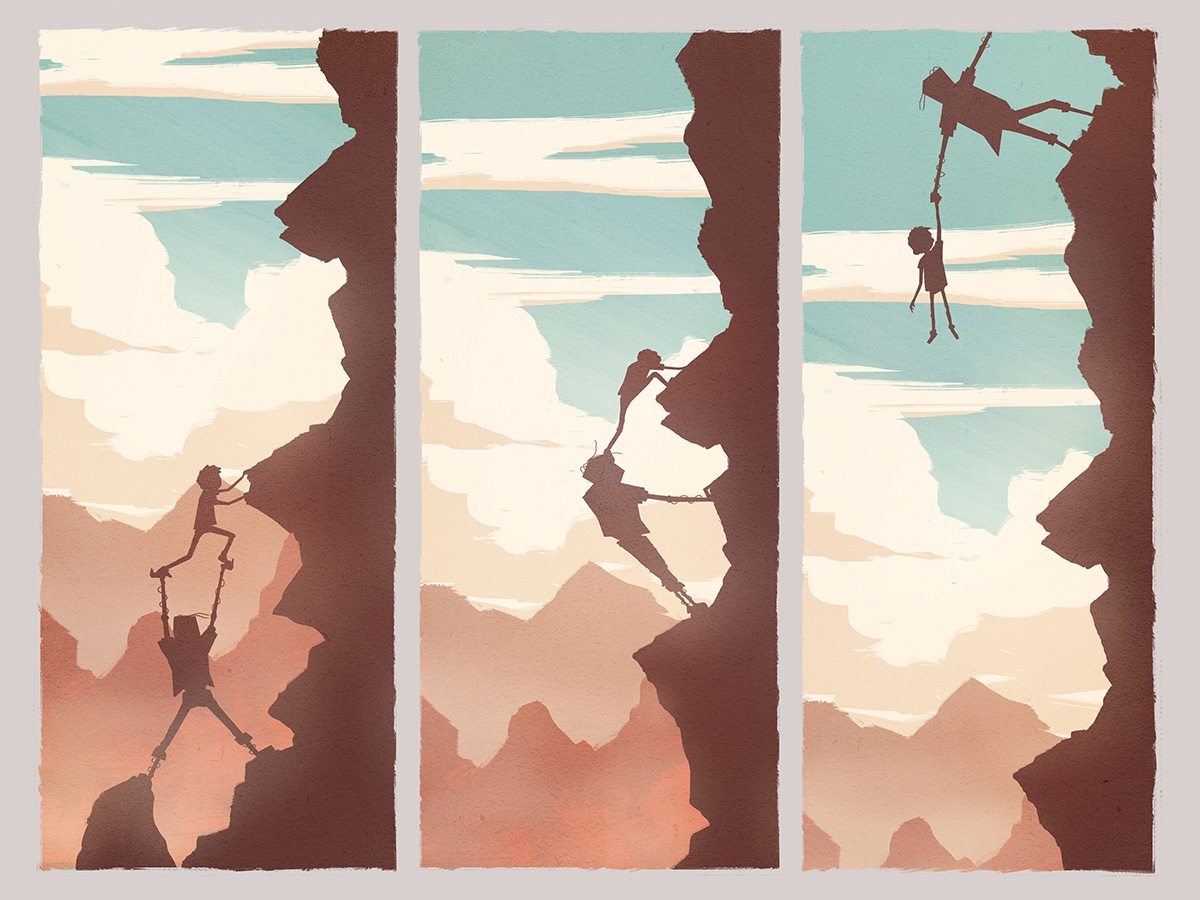
What were some of the tools and techniques used to bring the storyback app to life, in terms of concepts through to final animation?
Smith & Foulkes: One major advantage of the graphic novel structure is that you can basically create an elaborate storyboard, stick it to the wall and there, essentially, is your finished piece! All you then have to do is spend months and months coloring it in. We worked in collaboration with the illustrator Dan Burgess to develop each page. He brought a wonderfully nostalgic palette that reflected the Boys Own [a now-defunct magazine for pre-teen/teenage boys] nature of the story. From this we could then plot exactly where each user interaction could be and proceed into the animation and coding stage.
Alax Baranowski, from music production company Siren, had the tricky task of composing a musical score that could be endlessly repeated yet change at any moment depending on where you are in the story. He managed to create a beautifully analog atmosphere to act as a contrast to the digital nature of the project. We then worked closely with Anthony Moore at Factory to create a bed of sound effects that could occasionally fill in the gaps of the story that we couldn’t animate. So, even if you don’t actually see a car drive away, you hear and feel the emotional quiet left behind.
Radio Jones and His Robot Dad can currently be downloaded at no cost for the Apple iPad here.
